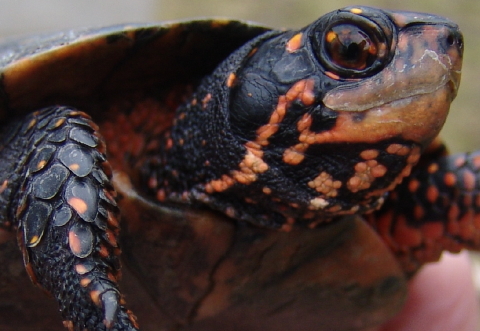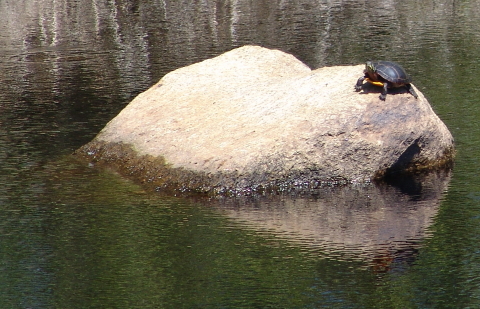
Florida Gopher Tortoise (Gopherus polyphemus)
Looking for alien creatures? No need for NASA to blast off into Outer Space when its most famous launch pad has already been invaded by critters straight out of the backlot of a low budget, 1950’s horror flick. Gopher tortoises check all the right boxes. Exotic? Yep. Cold-blooded? You bet. Ancient species? 300 million years and counting. If we were NASA, we might suggest looking down rather than up for the greatest discoveries.

Kennedy Space Center Famous Launch Pad 39 Complex
The Turtle Journal team headed for the Bahamas over the Christmas holiday with a day’s stopover in Port Canaveral to re-acclimate our frozen northern bodies to tropical conditions. While there, we arranged a behind-the-scenes, VIP tour of the Kennedy Space Center, guided by an official NASA representative. Little did we expect to turn this brief vacation interlude into a busman’s holiday.

Kennedy Space Center Launch Pad 39A
More than 3.5 miles from NASA’s gigantic Vehicular Assembly Building (VAB) at the other end of the massive crawlway stands Launch Pad 39 Complex, famous as the gateway for all Apollo program (moon) launches, as well as space shuttle launches. See map below.

Map of Kennedy Space Center on Merritt Island
The 39 A & B Complex was positioned so distant from the VAB because in case of a catastrophic failure, no one would survive the fuel explosion closer than 3.5 miles. In fact, within a few thousand feet of the launch pad, the sound waves themselves, generated by a normal blast off, would be powerful enough to stop the heart of anyone unbuffered from their effect.

Gopher Tortoise within Launch Pad 39 Complex
So, perhaps you might be as surprised as the Turtle Journal team when our vehicle drove through the Launch Pad 39 Complex.  Between 39A and 39B — the launch pads for every moon and space shuttle flight, we spotted a large gopher tortoise scurrying towards its burrow. The mature turtle scampered down the hillside as our vehicle approached and plunged its head into the burrow opening.

Gopher Tortoise Hides at Launch Pad 39 Complex
With his head in the burrow and full body and carapace outside, the tortoise couldn’t see us … and according to the First Universal Rule of Turtles, “If you can’t see your predator, then your predator can’t see you.” This old specimen has been around the Cape for a long, long time. We’re sure this turtle has witnessed the launches of Apollo 8 and 11 en route to the moon, and every space shuttle flight that has ever flown. At the same time, the most honored human VIP observer has to stay more than 3.5 miles away. When it comes to space launches, turtles get the best seats.

Juvenile Gopher Tortoise Tracks at Launch Pad 39 Complex
Nearby Launch Pad 39B is being renovated for the next generation of manned space flights where humans will venture once more to the moon, to the asteroids and then to Mars and beyond. Our tortoise friend will be on hand to experience these adventures, too … but he won’t be alone. In a nearby burrow, we found tracks from at least one juvenile tortoise. It’s quite amazing the prized real estate that Florida gopher tortoises have staked out. These Kennedy Space Center gopher tortoise burrows are situated directly on the Atlantic shoreline, across the Florida peninsula from their kissing cousins who occupy equally pricey burrows at the Ritz Carlton Naples Resort on the Gulf.


















